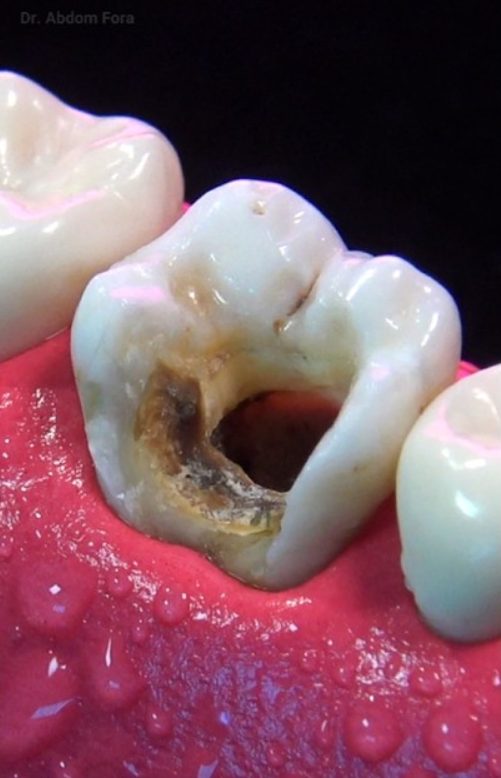Dental restoration has come a long way over the past few decades. What was once a daunting and sometimes painful procedure has evolved into an advanced, efficient, and virtually pain-free process, thanks to significant improvements in materials, techniques, and technology. “Amazing Dental Restoration” is not just about fixing teeth; it’s about restoring function, appearance, and confidence, and in some cases, even the ability to eat and speak comfortably again. From cavity fillings to full mouth rehabilitations, the field of dental restoration offers life-changing solutions for people with damaged or missing teeth.
Types of Dental Restorations
The scope of dental restoration is broad, encompassing a variety of procedures, each designed to address specific dental issues. Some of the most common types include:
- Fillings: For cavities, fillings are used to restore teeth that have been decayed. Modern materials like composite resins and porcelain are often used for a natural appearance. These materials bond well with the tooth structure and can be color-matched to blend seamlessly with the natural teeth.
- Crowns: A crown is a cap placed over a tooth that has been damaged, weakened, or severely decayed. Crowns restore the tooth’s shape, size, and function while protecting it from further damage. Today’s crowns are often made from durable, aesthetically pleasing materials such as porcelain or zirconia, which mimic the look and feel of natural teeth.
- Bridges: When a tooth is missing, a bridge is often used to fill the gap. This restoration consists of one or more artificial teeth, which are anchored to the surrounding natural teeth. Dental bridges are a reliable solution for restoring both function and appearance, helping patients chew, speak, and smile confidently.
- Implants: Dental implants are one of the most revolutionary advancements in restorative dentistry. An implant involves placing a titanium post in the jawbone to replace a missing tooth root, followed by the attachment of a crown or bridge. Implants offer a permanent, secure solution for tooth loss and help prevent bone deterioration in the jaw.
- Veneers: These thin, custom-made shells of porcelain or composite resin are bonded to the front of teeth to improve appearance. Veneers are ideal for correcting imperfections like chips, cracks, or discoloration and can create a flawless, white smile with minimal invasive work.
- Full Mouth Reconstruction: In cases where multiple teeth are damaged or missing, full mouth reconstruction is often recommended. This comprehensive restoration combines several procedures, such as crowns, bridges, implants, and even gum treatments, to restore both functionality and aesthetics across the entire mouth.
The Role of Technology in Dental Restoration
What makes modern dental restoration so amazing is the role of cutting-edge technology in improving precision, speed, and outcomes. Techniques like digital impressions, CAD/CAM (computer-aided design/computer-aided manufacturing), and 3D imaging have revolutionized the way dental restorations are planned and executed.
- Digital Impressions: Traditional impressions, which used messy putty to capture the shape of teeth, have been replaced with digital scanners that provide highly accurate, 3D images. This makes the restoration process faster, more comfortable, and more precise.
- CAD/CAM Technology: With CAD/CAM technology, dental professionals can design and create crowns, bridges, and other restorations in-house, sometimes in a single visit. The precision of this technology ensures that restorations fit perfectly and look natural.
- 3D Printing: In some cases, 3D printing is used to create dental models, crowns, and even dentures. This technology allows for incredibly detailed and customized restorations that closely mimic the natural tooth structure.
The Benefits of Amazing Dental Restoration
The advancements in dental restoration offer numerous benefits for patients. Restoring a damaged tooth not only helps with chewing and speaking but can also improve overall oral health. By addressing issues such as decay or tooth loss early, patients can avoid more serious complications in the future. Moreover, dental restoration can significantly boost self-esteem and confidence, enabling patients to smile without feeling self-conscious about missing or damaged teeth.
Conclusion
Amazing dental restoration has transformed the way we approach dental care, offering patients functional and aesthetically pleasing solutions that were once unattainable. With advancements in materials, techniques, and technology, modern dentistry is more effective and accessible than ever before. Whether you’re dealing with cavities, missing teeth, or cosmetic imperfections, dental restoration can help you achieve a healthy, beautiful smile that lasts for years to come.
